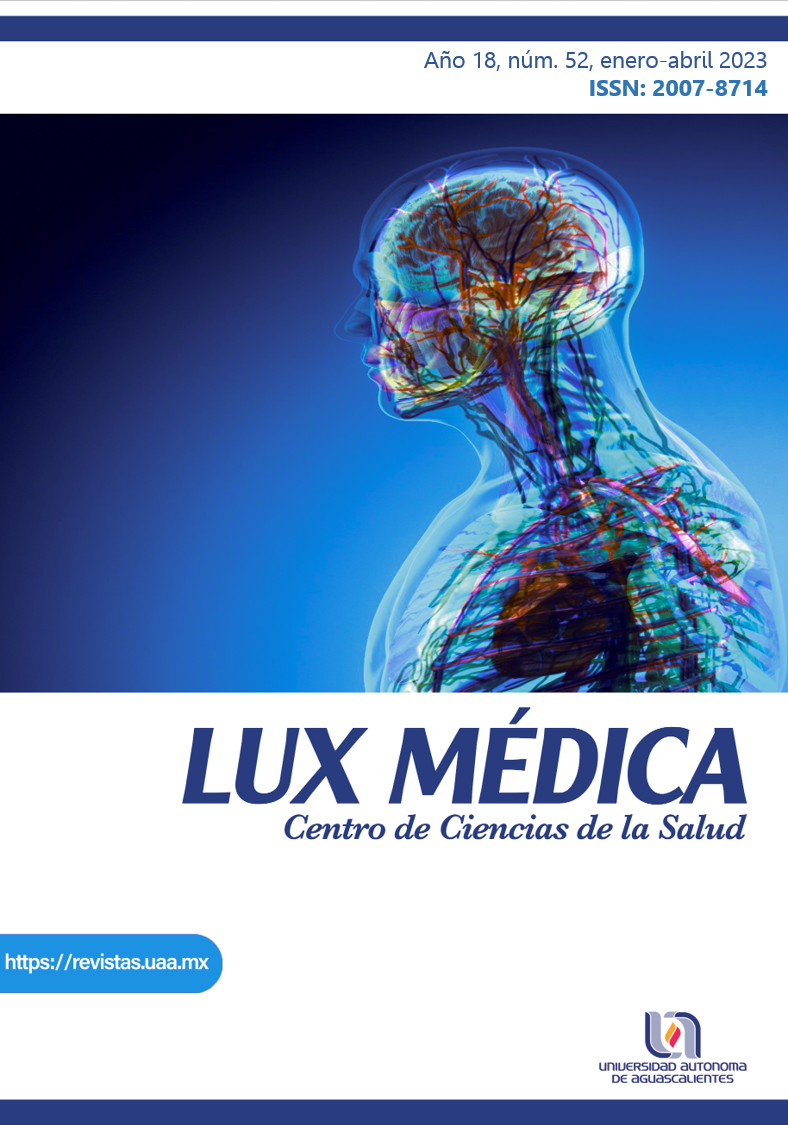Asociación entre la anchura de la distribución del eritrocito y el síndrome metabólico
DOI:
https://doi.org/10.33064/52lm20233714Keywords:
ADE, VPM, Metabolic Syndrome, HDL CholesterolAbstract
Introduction: Metabolic syndrome is considered a chronic secondary low-grade inflammatory disorder by endothelial stress and insulin resistance. There is evidence that the presence of a persistent inflammatory response causes changes in the production of blood cells and these problems lead to a higher Red Cell Width Distribution (RDW).
Objective: To determine an association between the increase in the RDW and the metabolic syndrome or any of its components.
Materials and methods: We studied patients diagnosed with metabolic syndrome and a group of healthy controls who attended the Didactical Medical Unit of the Autonomous University of Aguascalientes between June 2018 and December 2019. The variables studied were: age, gender, weight, height, waist circumference, white blood cell count, erythrocyte count, hemoglobin, mean globular volume, ADE, platelet count, mean platelet volume, systolic blood pressure, diastolic blood pressure, fasting blood pressure, blood triglycerides and cholesterol high density. The mean, standard deviation and percentage of each value were obtained in patients with metabolic syndrome and compared with healthy controls. We performed Student’s T test, X2 and Pearson correlation analysis. A value of p <0.05 with two tails was considered statistical difference.
Results: We included 168 patients (80 men, 88 women) and 342 controls (144 men, 198 women),
The average age for the cases was 47.6 ± 11 years (r = 18 - 77) and for the controls 45.6 ± 11.9 (r = 20 - 82) (p = 0.06). Age, erythrocyte count, mean globular volume, leukocyte count, platelet count, diastolic blood pressure, and systolic blood pressure were not statistically different between cases and controls.
The average value of the RDW for the controls was 12.27 ± 1.17 (r = 10 - 15.5) and for the cases of 13.84 ± 1.12% (r = 11.1-17%) (p = 0.00001)
The mean value of the Mean Platelet Volume of the controls was 8.52 ± 0.63 fl (r = 7.6 - 10.9 fl) and for the cases of 9.98 ± 0.58 fl (r = 8.9 - 13.6 fl) (p = 0.01).
We looked for the association between the RDW values and the different components of the metabolic syndrome by means of Pearson's correlation, finding only an inverse association between the RDW values and those of HDL cholesterol (- 0.38, p = 0.01).
Conclusions. RDW and the Mean Platelet Volume of the patients were significantly greater than those of the controls. We did not find an association between ADE and the value of age, serum glucose, triglycerides, systolic blood pressure or diastolic blood pressure. We found a significant negative association between ADE and HDL cholesterol.
Downloads
Published
How to Cite
Issue
Section
License
Copyright (c) 2022 Alejandro Rosas

This work is licensed under a Creative Commons Attribution-NonCommercial-ShareAlike 4.0 International License.
La revista Lux Médica está bajo una licencia de Creative Commons Reconocimiento-NoComercial-Compartir Igual 4.0 Internacional.












